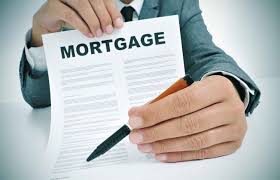Second charge mortgages in the UK are fast becoming a much more popular financing option than in past times. These specialist financial products are increasingly being used as a true alternative to remortgaging properties, which can otherwise be a very costly process.
Such is the growing popularity of second mortgages in the UK that according to the Finance and Leasing Association (FLA), in the UK in January 2019 alone, around 2,000 second mortgages were acquired and funded across the country for a whole range of purposes. Remortgaging on the other hand is a much more established and well-known way of acquiring potentially additional funds through your property.
The remortgaging process has been around in the UK for a long time and millions of people every year remortgage properties up and down the UK. although both products can be used for similar purposes, remortgage offerings are more widely recognised by many consumers as second charge loan require specialist lenders and are usually not as widely offered as first charge mortgages and remortgage products.

How Does a Second Charge Mortgage Work?
A second mortgage works by running alongside and in conjunction with your first charge, or primary mortgage on your property. by their very nature, you may only have a second mortgage if you have a primary [first] mortgage in place already. Second charge mortgages require the first charge lender to be in agreement for the loan to proceed.
The first charge lender always gets precedence over the second charge lender and therefore, should the borrower fail to repay their mortgages, it is the first charge lender who gets paid first from any money recouped. For example, if the borrower fails to keep up with their repayments and the property is repossessed, the money from the quick sale of the property will pay off the first charge loan and the money left over will go towards the second charge lender.
Second mortgages will often be required as a potentially cheaper alternative to remortgaging, which may otherwise entail early repayment charges (ERCs), or in order to unlock additionally ‘earned’ or ‘acquired’ equity that the property has acquire through the repayment of the initial mortgage. The money from the second mortgage will typically then be used to invest in a business or the property itself, or even for debt consolidation purposes.
What are Second Mortgages Used For?
Primary, or first charge mortgages are more often than not used for the actual purchasing of the property in question, although there are a range of other reasons one may wish to take out a mortgage. Second charge mortgages however, have some very common purposes which are considered by lenders as sensible reasons to apply for such a mortgage:
Home Improvement Loans – By investing in your property, for example, in the form of a loft conversion, conservatory and even new central heating and double glazing, you can greatly increase the value of the property. this is appealing to lenders as they know in such cases, the chances of you repaying the second charge loan on your property are higher. Once works are complete and the value of the property effectively increased, you can simply remortgage to pay off the second charge mortgage, leaving you with a single more manageable first charge mortgage.

Debt Consolidation – It may be the case that the borrower has a number of debts outstanding; credit cards, utilities and others. In these cases, a second charge lender may well strongly consider an application for a second mortgage to consolidate the debts by paying them off with the loan. This leaves the borrower with a single, more affordable route of repaying their debts.
Starting a Business – You may need funding to inject into a business project to really get it off the ground, up and running. In such cases, the lender may look deeper into your business idea, its projections and expected turnover and profits. On this basis, you may then be able to acquire a second mortgage on your property, on top of you existing mortgage, to inject that much-needed money into your business.
Quicker than Remortgaging – It is sometimes much more time-efficient to get a second mortgage rather than a remortgage product on your property, with second mortgages often a much quicker mortgage route to get you the funding you need. As with bridging loans, lenders of these mortgages understand that time is sometimes of the essence, perhaps more so than traditional mortgage lenders.
How Much Can I Borrow?
Second charge mortgages, as with any other secured loan, depend strongly upon the value of the property against which they will be secured. Additionally, there needs to be enough equity to secure the additional loan amount against (the Loan-to-Value) before the loan can actually be properly considered.
However, second mortgages will often be anywhere from £10,000 to £3 million and potentially even higher, depending on the property and the circumstances in each case.
What are the Risks of a Second Mortgage?
Being a mortgage and therefore a secured loan, with your property, often your home as security, there are a number of distinct, potential risks involved with a second mortgage which you should always be mindful of:
- They are more expensive than traditional, first charge mortgages, due to the increased risk to the lender
- You run the risk of having the property in question repossessed if you fail to keep up with your repayments on the second charge loan
- Having another mortgage is another line of debt you will be taking on and so you should be sure you can comfortably afford it, along with factoring in any potential interest rate fluctuations (this is known as ‘stress-testing’)
- If you sell the property against which the second mortgage is secured, the money from the sale will go towards the first charge mortgage fist and foremost. If there is a shortfall in paying the second charge lender, you will need to pay for that yourself

How Does Remortgaging Work?
Remortgaging is simply the process through which a property owner may switch mortgages, either from one lender to another, or from one mortgage product to another with the same lender. Remortgaging refers to changing your first charge mortgage, rather than a second charge mortgage.
Remortgaging is usually undertaken when the borrower is coming to the end of a cheaper fixed rate or other introductory mortgage product with a lender. Once the introductory or fixed rate mortgage term comes to an end, lenders will tend to move borrowers over to a Standard Variable Rate (SVR) mortgage, which will likely be one of their most expensive mortgages.
Hence, at this point, many borrowers will seek to remortgage their property to a cheaper mortgage contract, potentially with another lender. However, it is key that you discuss this with your current lender before switching. Unlike when you may switch utilities online, switching mortgages has a lot more at stake and is a much more detailed and costly process.
Another reason people may wish to remortgage their property is when they have built up additional equity and then want to utilise that. For example, a property may be worth £500,000 with a mortgage of £250,000 against it. over time the value of the property rises to £550,000 and the borrower has paid off half of their mortgage but needs the additional money. They may then be able to remortgage against half the value of the current property value, acquiring £275,000.
What to Consider When Remortgaging
Remortgaging is a detailed and involved commitment and process and therefore you should take various factors into consideration before and during doing so:
- Is the remortgage product a fixed or variable rate mortgage?
- If the new mortgage product is at a fixed rate, is it cheaper than what you currently have?
- If the new mortgage contract is on a variable rate, what is the likelihood that interest rates will go up or down?
- Can you afford any fluctuations in interest rates (the base rates are set by the Bank of England)?
- Are there any early repayment charges and if so, will remortgaging still work out cheaper?
Fees When Remortgaging
Remortgaging can, if you are not careful, turn into a costly and stressful process and you should remember that there are several fees to consider when arranging a remortgage. These include exit fees you will need to pay your current lender for the administration costs of leaving; this is usually no more than £295.
You will also need to consider the valuation fees involved as the new lender will want their own valuation expert to assess the value of the property before they lend. Arrangement fees will also be needed for the old and new lenders to facilitate the process of moving your mortgage. You will also need to factor in the legal fees to cover the process.



